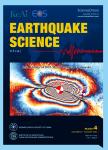India-Eurasian collision vs. ocean-continent collision
India-Eurasian collision vs. ocean-continent collision作者机构:Institute of Geophysics China Earthquake Administration Beijing 100081 China Department of Earth and Atmospheric Science Saint Louis University Missouri 63103 USA
出 版 物:《Acta Seismologica Sinica(English Edition)》 (地震学报(英文版))
年 卷 期:2007年第20卷第1期
页 面:1-10页
核心收录:
学科分类:070801[理学-固体地球物理学] 07[理学] 0707[理学-海洋科学] 0818[工学-地质资源与地质工程] 0708[理学-地球物理学] 0815[工学-水利工程] 0813[工学-建筑学] 0814[工学-土木工程] 0825[工学-航空宇航科学与技术] 0704[理学-天文学]
基 金:National Natural Science Foundation of China (49374207 and 49974021)
主 题:India-Eurasian collision ocean-continental collision delamination
摘 要:Ample observational evidence shows that there is a northward crustal subduction zone underneath the Yarlung Zangbo suture between India and Eurasia. It penetrates Moho to a depth of about 100 km. There are probably multiple such crustal subductions under the Himalayas. They are different from lithosphere subduction during oceanic collisions. The detected slabs in the upper mantle north of the Yarlung Zangbo suture can be interpreted as remains of the Indian Plate's mantle lithosphere. In contrary to ocean-continent subduction, the mantle lithosphere is de- laminated from the crust as the Indian Plate subducts underneath Eurasia. Existing structural images of the crust and upper mantle of the Tibetan Plateau reveal that there were both northward and southward subductions over different geological period, causing some seismic velocity annmalies around those subduction zones.



